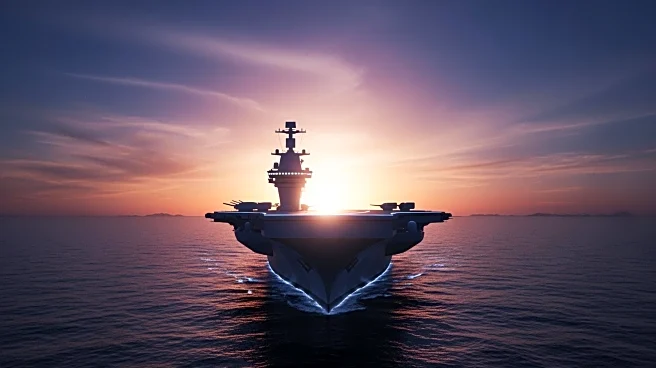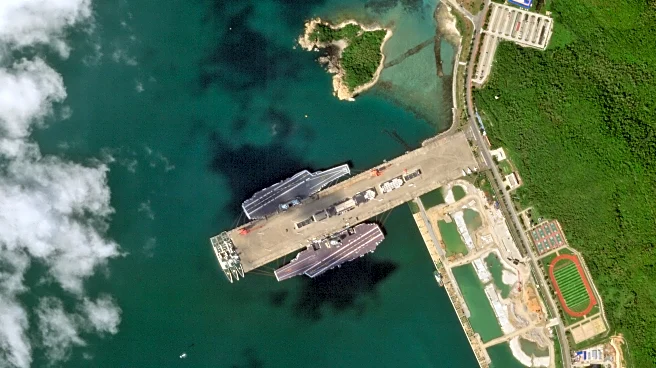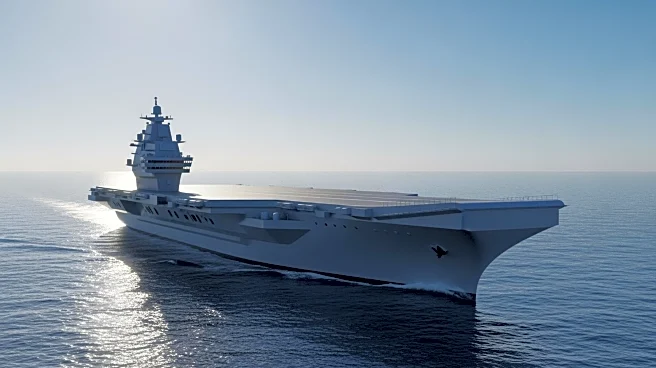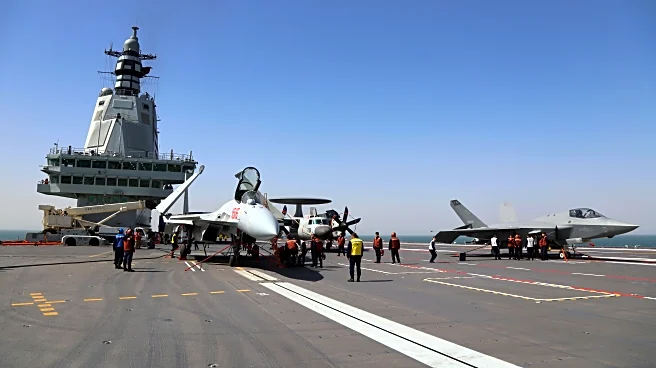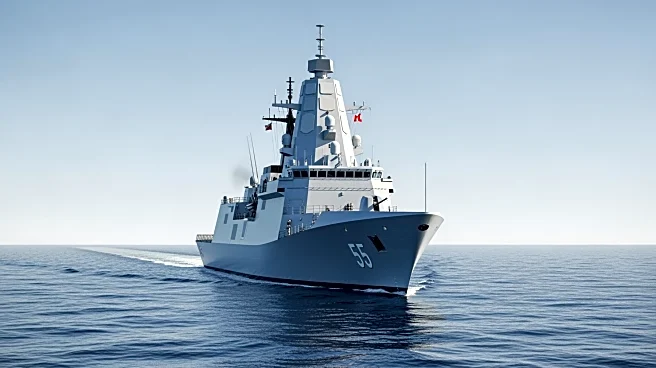What's Happening?
China has commissioned its first domestically built aircraft carrier, the Fujian, marking a significant step in its military modernization efforts. President Xi Jinping attended the commissioning ceremony
in Hainan province, where he inspected the vessel. The Fujian, equipped with a flat flight deck and electromagnetic catapults, is expected to carry more and heavier-armed jet fighters compared to China's previous carriers, Liaoning and Shandong. The Fujian's commissioning is seen as a milestone in China's naval capabilities, although analysts note that it will take time before the carrier becomes fully operational. The Chinese navy has conducted nine sea trials this year, launching new carrier versions of the J-35 stealth fighter and the KJ-600 early-warning aircraft. Despite these advancements, the Fujian is diesel-fueled, limiting its range compared to U.S. nuclear-powered carriers.
Why It's Important?
The commissioning of the Fujian represents a strategic enhancement of China's naval power, potentially altering the balance of military capabilities in the Asia-Pacific region. The carrier's ability to project power beyond China's immediate periphery could challenge U.S. naval dominance, particularly in areas like the South China Sea and around Taiwan. The Fujian's deployment could also serve as a domestic propaganda tool, showcasing China's growing military prowess. However, the carrier's operational limitations, such as its need for frequent refueling, may restrict its effectiveness in sustained blue-water operations. The development of the Fujian underscores China's commitment to expanding its military reach and could influence regional security dynamics.
What's Next?
Observers will closely monitor the Fujian's upcoming deployments to assess its operational readiness and integration with other naval assets. The Chinese navy is expected to conduct further tests and exercises to refine the carrier's capabilities. Analysts anticipate that the Fujian will play a role in China's military strategy concerning Taiwan, although its exact function in potential conflict scenarios remains uncertain. The carrier's future deployments could include more ambitious missions beyond China's near seas, potentially increasing tensions with neighboring countries and the United States.
Beyond the Headlines
The Fujian's commissioning highlights the broader trend of China's military modernization, which includes advancements in missile technology and electronic warfare. The carrier's development may also reflect China's strategic ambitions to assert its influence in global maritime affairs. As China continues to enhance its military capabilities, regional powers and the U.S. may need to reassess their defense strategies and alliances. The Fujian's role in China's naval strategy could also prompt discussions on international maritime law and freedom of navigation in contested waters.
